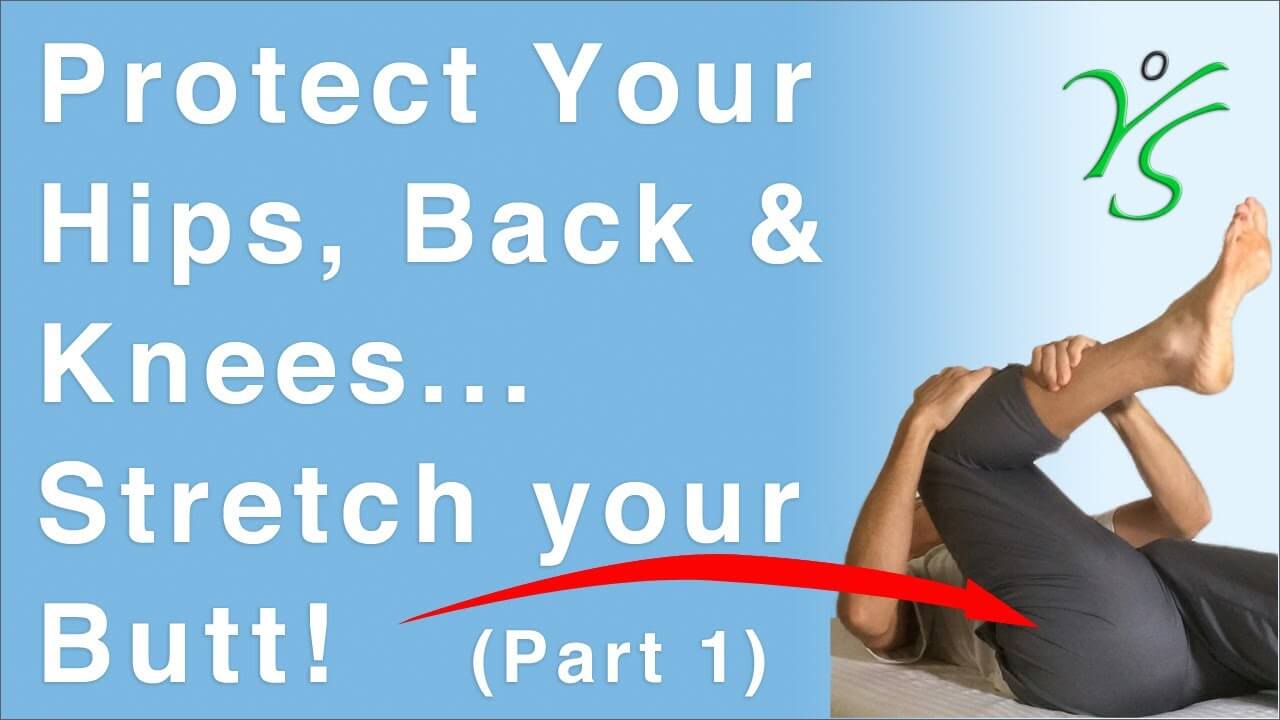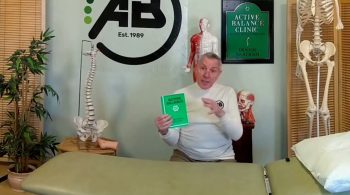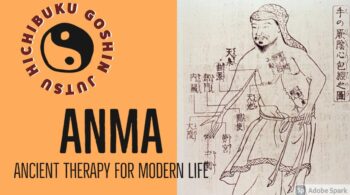Today, it’s all about the Gluteus maximus, the largest of the butt muscles. You’re going to learn how to stretch them to increase their range of motion and keep them flexible. But chances are you’ve never run across anyone who’s ever had an injury or a chronic condition with the Glute Maximus. But did you know that if you allow these muscles to get weak and tight they can become a major culprit to low back and knee pain?
Without a strong flexible, gluteus maximus, movements that involve the lower back, hips, and knees become unstable, resulting in stress and damage to the joints.
And over time, these joints pay the price, increasing pain, gradually robbing you of joy whenever you engage in your favorite activities, eventually causing you to give up some of these activities. Stretching your gluteus maximus and keeping it flexible helps to maintain healthy joints in the lower back, hips, and knees. And of course, healthy joints reduce the risk of injury and chronic conditions. And the best part, you’re able to continue enjoying your favorite activities. Hi, Dan Rioux with YouStretching.
com. In addition to being the largest of the three butt muscles, the Gluteus Maximus is also the most visible, giving the buttocks much of its shape and form. But it’s not just there for appearance. It performs many functions. Two of the most common involve extending your hip and externally rotating your leg.
You extend your hip every time you climb the stairs or stand up from a sitting position. To externally rotate your leg just make like a duck when you walk, turning your feet outward. You also externally rotate your leg every time you change directions while walking and running.
Our large glutes are involved in everyday activities like climbing the stairs, getting up from a chair, or getting out of a car. But they really begin to perform when they get involved in activities that require power and speed like sprinting, jumping, or rock climbing.
Now to get these muscles flexible and keep them that way, I’m going to show you how to stretch them using the Two-Second Stretching Technique. It’s a highly effective technique, painless to perform, and safe, especially if you deal with issues like low back pain or knee pain. To learn more about this technique just click the link below to get our free ebook about Two-Second Stretching. Now to stretch your Glutes you’re going to need something comfortable to lay on, like a massage table or bed with a firm mattress. Other options include a yoga mat on the floor, a padded carpet, or any place where you can lay comfortably while still supporting your lower back.
The Glutes are complex muscles with fibers that run vertically, horizontally, and even diagonally. To stretch all of these fibers we’re going to need to do three separate stretches.
So today I’m going to teach you the first stretch which will address the vertical fibers. Let’s get started. Take a look at the demo below.
Start by laying on your back with your legs flat on the surface. Now bend the knee of the target leg. This is the starting position. Without any assistance from your hands, bring your knee forward along the outside of the torso towards the shoulder. Once your leg can no longer move the knee on its own, wrap your hands around the back of the thigh and assist by pulling gently.
Once you feel slight discomfort, hold the stretch in that position for two seconds. Then slowly release the leg to the starting position. You’ve just completed the first rep. Now let’s incorporate some slow rhythmic breathing to make sure that the muscles are getting plenty of oxygen. So as you begin the next rep, slowly exhale, bringing the knee towards the shoulder.
Now, slowly inhale as you release the leg to the starting position. As you continue doing more repetitions make sure that the knee travels along the outside of the torso as it moves towards the shoulder.
This will make sure that you’re getting a deeper more thorough stretch than you would if the knee was traveling towards the center of the chest. Repeat the stretch up to ten times or until you begin feeling fatigued, whichever comes first. Then, do the other leg.
There’s a benefit in doing up to three sets. But keep in mind these are maximums and not minimums.
The number of reps and sets you do will depend on a number of variables. For more guidance on that, click the link below for a video on reps and sets. The important thing to remember is you should only do as many reps and sets as you can do slowly, under control, and without pain or fatigue.
Well, that’s it. Try doing this stretch daily and monitor your progress over the next few weeks. I would love to hear from you, about your progress, questions you have, issues you run into, and any suggestions you have for us.
so please, leave us your comments and questions below. And if you liked this video or found it helpful, please give us a thumbs up so we’ll know that we’re on the right track.
And be sure to share this video with family members, friends, and anyone who could benefit by improving their flexibility. Well, I’m Dan Rioux. And if you’re watching this anywhere other than at YouStretching.com, be sure to head over there, where we have a growing library of free videos and a free ebook. And if you haven’t already, be sure to sign up so we can keep you posted when we release new videos.
So until next time, I hope you stay excited about living an active pain-free lifestyle and committed to the self-care that makes it a reality..






